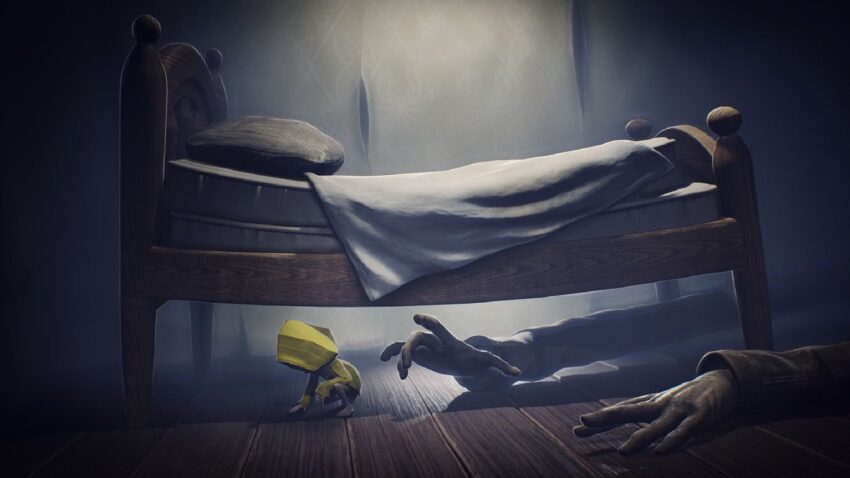As a huge fan of horror games, I’m certainly not squeamish. The more monstrous, the better—that’s my motto. However, more monstrous doesn’t necessarily mean bigger, toothier, or less human. Sometimes, it can mean precisely the opposite.
Take *Darkest Dungeon*, for example. It’s renowned for its excellent sanity system and its iconic opening cutscene. Near the end, we see the humongous, cavern-filling flesh-horror lurking deep within the dungeon—the abomination from which the Ancestor quite understandably ran howling. There’s nothing remotely human-like about that creature. Terrifying as it is, it doesn’t quite hit the same spot for me as some other horror villains do.
The horror villains that disturb me the most aren’t those massive, slathering monsters, but those that remain at least recognizably human in origin. The *Resident Evil* series excels at this, from its standard-issue zombies to the infamous Regenerators and even Nemesis. There’s a tragic layer to these creatures—humans pitilessly experimented on to become “monsters” (see also: Lisa Trevor). There’s perhaps something even deeper than that too.
In the *Little Nightmares* series, we’re presented with human characters that are altered or exaggerated, and I find this effect even more disturbing than many demons or Lovecraftian horrors. (Heads up for minor spoilers for the first two *Little Nightmares* games below!)
—
The original *Little Nightmares* launched in April 2017, and I haven’t stopped thinking about it since. By the time I completed the second game, the series had burrowed into my mind like the ghastly little parasite from *Baldur’s Gate 3*. There’s no extracting it now, friends.
Severing the Janitor’s long, grasping arms with that slamming door was a grisly moment and one of the original’s first big, impactful scenes. It cemented one thing in my mind: the game’s boss battles, unconventional as they are, are truly haunting setpieces.
From being chased down hallways by a ravenous group of Guests to desperately evading the Twin Chefs in the Maw’s kitchen, I felt intense pressure to solve visual puzzles quickly (experiencing many game overs as I did so, since puzzles aren’t my strong suit). Along the way, I could never shake the feeling of being hunted by something much larger than myself, with no weapons except whatever tools the environment provided.
—
What’s most unsettling about these pursuers is that they are distorted visions of humans.
I’ve long been fascinated by the idea of the uncanny valley and the frequent use of ventriloquists’ dummies, dolls, and similar figures in horror. *Little Nightmares* does a wonderfully horrifying job of twisting the everyday and mundane into something deeply sinister.
The school in the second game, with the porcelain doll bullies and the hideous teacher with the extendo-neck, is the most disturbing example in my book. The bullies, for once, aren’t much larger than the main characters, but they often appear in groups, heightening feelings of isolation and threat. By this point in the series, we certainly don’t need any more help feeling powerless.
Our powerlessness is underscored further by the limited use of the unwieldy weapon we have to keep the bullies at bay. Most of the time, we’re a tiny character in a huge environment, facing foes that tower over us. This is constantly reinforced, without a single word spoken, by the fact that much of the platforming revolves around climbing furniture and such.
We have no choice but to keep moving, usually from left to right—and as we do, more and more horrors of our situation are revealed.
Implications about the Maw, the Janitor’s motives for capturing his victims, and the meat the chefs were preparing continued to form in my mind as I saw more—and none of it was remotely okay.
—
Similarly, in the second game, I started to get an inkling about the origins of The Thin Man (a clear cosplay of Slender Man), a creeping dread that proved partially correct.
*Little Nightmares* keeps clichéd jump scares very thin on the ground, but the developers definitely know how to give me a jolt when they want to.
For example, Six hungrily pouncing on the Nome made me let out an involuntary yell. I almost shouted again at the end of the *Secrets of the Maw* DLC when I learned that Sausage Nome (my nickname for the poor soul) was actually the Runaway Kid. Those poor Nomes.
As the second game wrapped up, Six’s transformation and her letting Mono fall into the chasm hit me hard again. It’s all done so cleverly—with virtually no dialogue, just plot twists, subtle hints, and clues woven throughout.
It’s hide-and-seek horror at its best.
https://www.dualshockers.com/little-nightmares-creepiest-horror-games/
